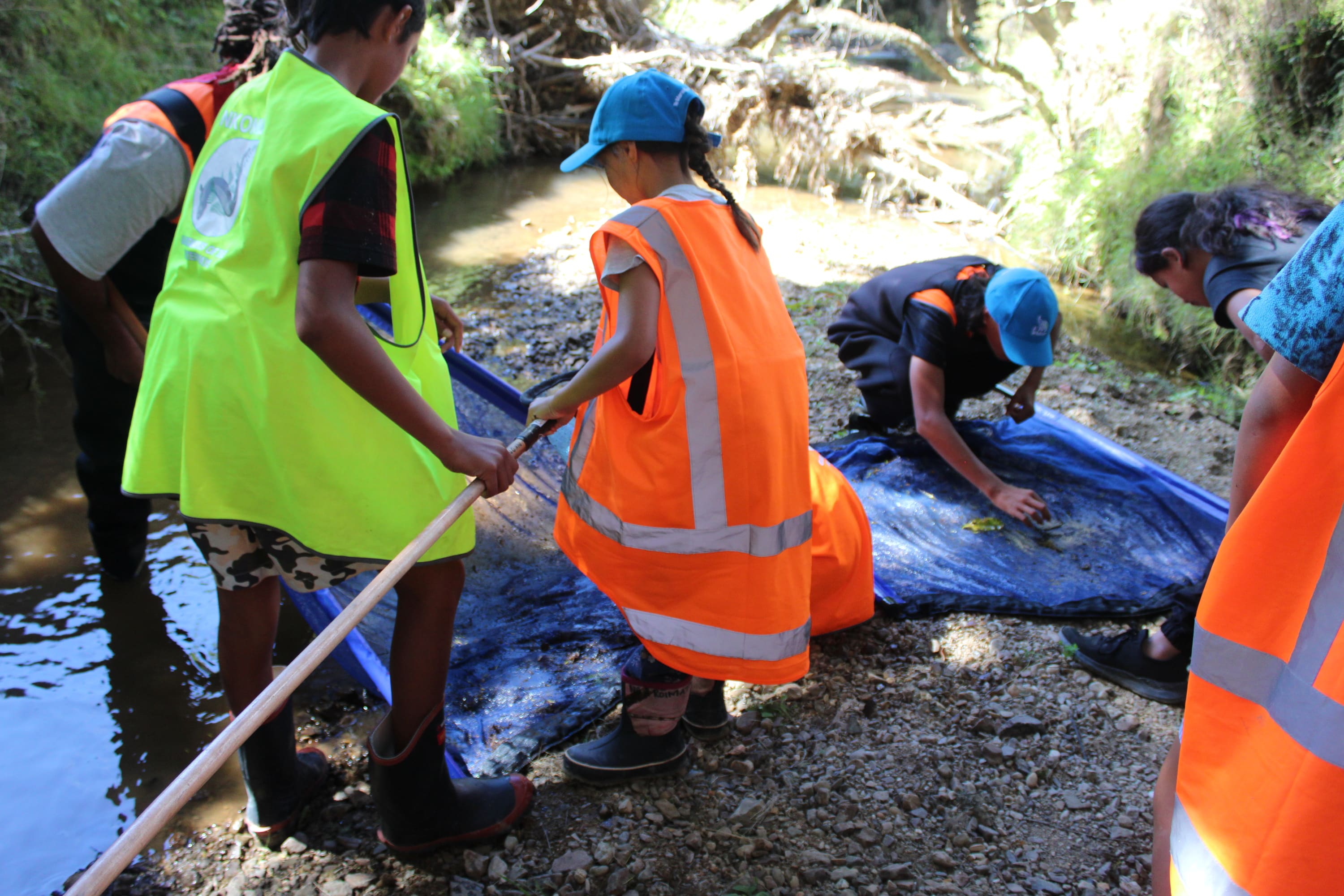Ko te wai te oranga – Ngāti Hau sites show the strength of kaitiakitanga in action

Summary
Whānau and tamariki joined NKONWM kaitiaki to survey tuna and taonga species across Ngāti Hau sites, collecting data and reconnecting with the life beneath the surface.

Introduction
Across the Ngāti Hau sites, the sound of laughter mixed with the soft splash of nets being lifted. This wasn’t just a day by the water — it was a living lesson in kaitiakitanga. Guided by Ngā Kaitiaki o Ngā Wai Māori (NKONWM), tamariki from the Manihera whānau and local hapū came together to check on the health of their waterways and the taonga species that call them home.
This fish survey is part of an ongoing kaupapa to monitor tuna (eel) and other freshwater species, using both mātauranga Māori and science to understand how our waterways are changing — and what can be done to protect them for future generations.
Mātauranga + Science
Each survey brings mātauranga Māori and scientific tools side by side. Kaitiaki and whānau helped capture and release tuna and other taonga species, carefully recording data about what was found and where. These insights help NKONWM assess the health of the wai — looking at species diversity, migration patterns, and the overall mauri (life force) of the ecosystem.
While NKONWM regularly measures water quality parameters like pH, dissolved oxygen, clarity and temperature, this kaupapa focused on connecting people to process — showing how every observation contributes to the bigger picture of healthy waterways.
Partnerships and People
This mahi reflects the NKONWM value of whanaungatanga — working together through trust, care, and shared purpose.
By partnering with whānau and tamariki, NKONWM continues to strengthen local capability and ensure that knowledge stays close to home. The Manihera whānau led by example, reminding everyone that even our youngest kaitiaki can play a role in restoration.
Partnerships like this also support NKONWM’s broader work with councils, agencies, and funders — showing how community-led science and mātauranga Māori can align to deliver real outcomes.
Places and Species
The surveys took place across Ngāti Hau sites within the Wairua catchment — areas that connect directly to the wider Hikurangi Repo system. These places hold deep whakapapa links for local hapū, and they continue to sustain the tuna that have travelled these waters for generations.
Every tuna returned safely to the water carried a story: of survival, connection, and the ongoing efforts to restore fish passage across Te Tai Tokerau. Each observation, each release, adds to NKONWM’s understanding of how species are moving and thriving across the catchment.
Capability and Learning
A key outcome of this mahi was hands-on learning. Tamariki gained practical experience in species identification and safe handling, while also hearing kōrero about traditional tuna migration and the importance of seasonal rhythms.
These moments strengthen both skills and confidence. When whānau know how to observe, record, and report changes in their local waterways, they become active partners in long-term restoration. For NKONWM, this is what Pou Kaitiaki looks like in practice — shared learning that builds intergenerational capability.
Results and Reflections
Data collected from the surveys will help NKONWM map fish distribution and inform future monitoring cycles. But beyond the numbers, the real result was in the connections strengthened — between people, place, and practice.
This mahi is a reminder of what we can achieve when we come together for the health of our waterways. By combining community participation with robust data collection, NKONWM continues to set an example of kaitiakitanga in action — practical, humble, and focused on solutions that last.
What’s Next
Further fish surveys are planned across the rohe, continuing to track tuna movement and other species trends. NKONWM encourages whānau to stay connected and join the next survey, helping protect the life within our wai for generations to come.
Acknowledgements
NKONWM would like to acknowledge the support and contributions of our hapū, whānau, and community who took part in the fish survey. Your local knowledge and commitment are the foundation of this mahi.











